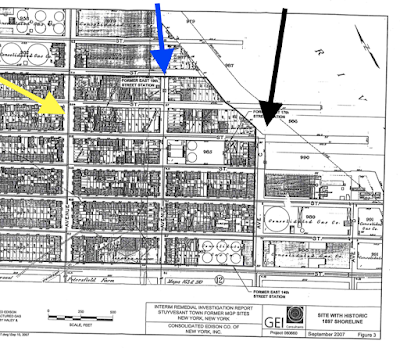
Halloween at Ray's Candy Store on Avenue A... photos by Lola Sāenz ...




Soon, it was deemed the perfect place to put Met Life’s new middle-class housing developments, Stuyvesant Town and Peter Cooper Village.
In 1945, 3,000 families were moved out of the Gas House District ...
According to the study’s findings from investigations in 2006 and 2008, contaminants were found, but located deep in the ground (at least five feet) with most even lower, and in groundwater beneath the site, though that water is not used for drinking. MGP residential levels tested in the air indoors were found to be typical. Outdoor air samples collected were also found to be normal for an urban area. Because of this, Con Ed said in an advisory this week that it’s unlikely people will come into contact with these contaminants, though air monitoring will continue.
Still, the company is now proposing a “remediation” (cleanup) plan for the site that involves, among other things, the placement of wells.















In New York City, only 97 out of roughly 25,000 eating and drinking establishments have a cabaret license. Obtaining one is costly and time-consuming, requiring the approval of several agencies, and only businesses in areas zoned for commercial manufacturing are eligible.
The Cabaret Law was enacted in 1926. It made it illegal to host “musical entertainment, singing, dancing or other form of amusement” without a license. The law is widely believed to have originally been used to target racially mixed jazz clubs in Harlem, but it was broadly applied. Music was not permitted at unlicensed bars at all until 1936, when the law was amended to allow radio- and piano-playing. The same year, operators of a ship that had taken men from the Bowery Mission on a day cruise were fined for running an unlicensed cabaret because a tap dancer was on board.









Inspired by the contemporary aesthetic of Italian rationalist design, 32 East 1st Street purposely lives within its urban context, presenting a substantial limestone exoskeleton accentuated by expansive windows and geometric metal detailing.

















